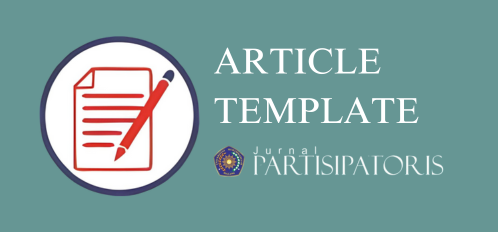PARTICIPATORY MAPPING FOR DISASTERS IN TULUNGREJO VILLAGE, BUMIAJI SUB-DISTRICT, BATU CITY
DOI:
https://doi.org/10.22219/jp.v2i1.11743Abstract
The ecological situation in Batu has a significant potential disaster, one of the areasthat have this is Tulungrejo village in the Bumiaji sub-district of Batu city. In general,
there have been thirty-two disaster outbreaks in the Bumiaji sub-district; the area
with the most disaster risk is Tulungrejo village. Therefore, as an awareness of
emergency response situations, participatory mapping for disaster potential risk is
essential to conduct by using the information of local people. This research applied
the Participatory Geographic Information System (Pgis) as the mapping approach.
The purpose of using this approach is to produce a disaster risk potential map as
the reference in determining the priority of disaster risk reduction based on the
information that exists in the local area. This participatory mapping is an essential
part of creating the social-technical resilience by the community.
Downloads
Download data is not yet available.
Downloads
Published
31-03-2020
How to Cite
Amiruddin, L., & Rozalinna, G. M. (2020). PARTICIPATORY MAPPING FOR DISASTERS IN TULUNGREJO VILLAGE, BUMIAJI SUB-DISTRICT, BATU CITY. Jurnal Partisipatoris, 2(1), 19–30. https://doi.org/10.22219/jp.v2i1.11743
Issue
Section
Articles
License
Authors who publish with Jurnal Partisipatoris agree to the following terms:
- For all articles published in the Jurnal partisipatoris, copyright is retained by the authors. Authors give permission to the publisher to announce the work with conditions. When the manuscript is accepted for publication, the authors agree to the automatic transfer of non-exclusive publishing rights to the publisher.
- Authors retain copyright and grant the journal right of first publication with the work simultaneously licensed under a Creative Commons Attribution-ShareAlike 4.0 International License that allows others to share the work with an acknowledgment of the work's authorship and initial publication in this journal.
- Authors are able to enter into separate, additional contractual arrangements for the non-exclusive distribution of the journal's published version of the work (e.g., post it to an institutional repository or publish it in a book), with an acknowledgment of its initial publication in this journal.
- Authors are permitted and encouraged to post their work online (e.g., in institutional repositories or on their website) prior to and during the submission process, as it can lead to productive exchanges, as well as earlier and greater citation of published work (See The Effect of Open Access).











